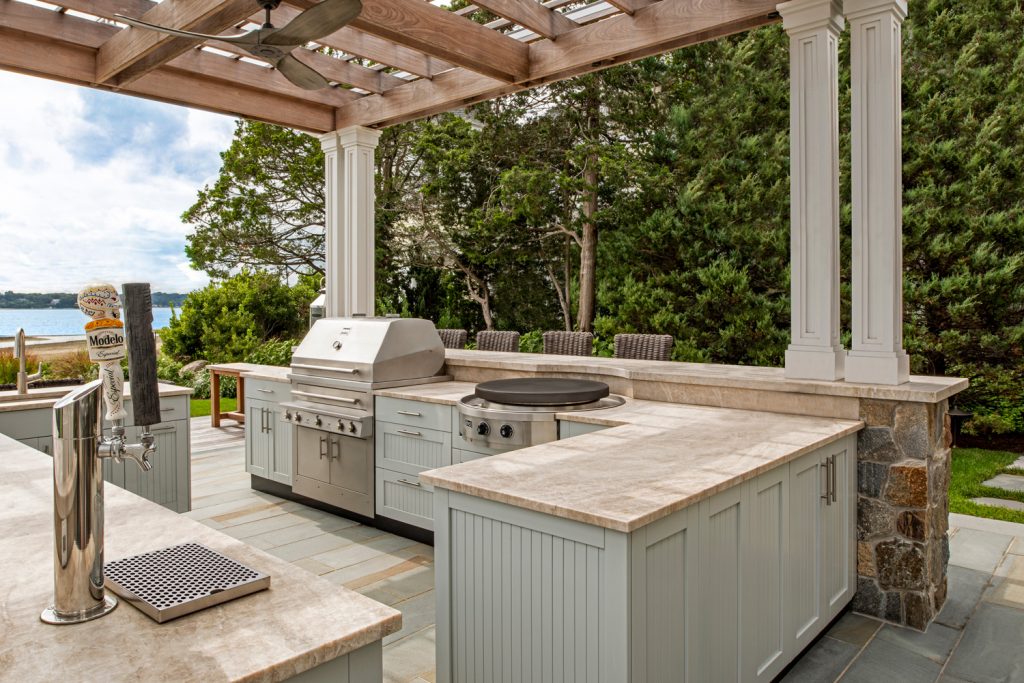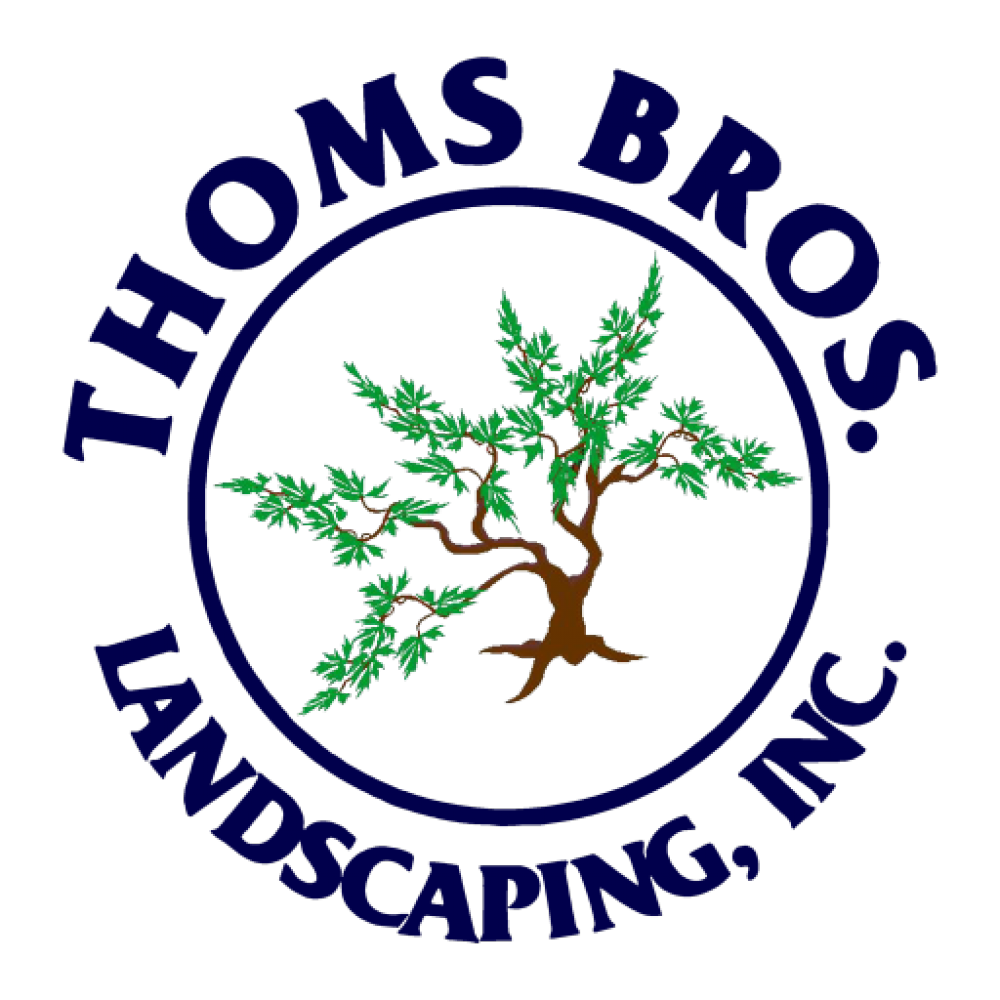(Reprinted with permission from Woodland Direct)
For many homeowners, grilling is a fundamental part of summer — or any other time of the year. Whether you’re building a custom outdoor kitchen or just want the option to prepare your favorite meals outside, adding a grill to your backyard is essential.
You’ll also be able to upgrade your grill with extra features and accessories that let you enhance your cooking techniques to add more to your outdoor menu.
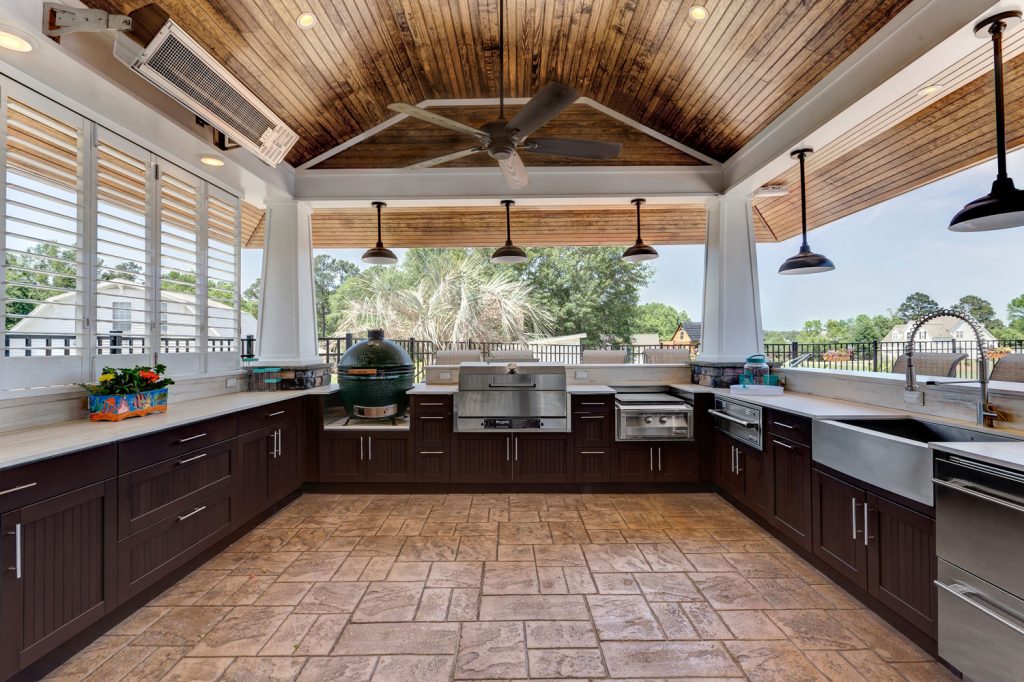
With so many models on the market, choosing a grill that meets your needs and looks great in your space can be a challenge.
We’ve put together a comprehensive guide to grills, including which styles are available, how to choose the right size, and which accessories you’ll need to create the ultimate grilling experience!
FIND THE BEST FUEL SOURCE
Gas
Gas grills are very convenient and easy to operate because they receive a constant flow of fuel, and you won’t have to wait for charcoal or briquettes to heat up before you start cooking.
They have built-in ignition systems that allow them to start and stop instantly. Instead of using a match or lighter to manually ignite your grill, you’ll simply turn a knob to switch it on and off.
Gas grills operate with Natural Gas or Liquid Propane. There’s no significant difference between the two fuels in terms of how they cook your food, so your decision comes down to what fuel is available on your property and which is most convenient for your lifestyle.
Keep in mind, gas grills designed for one fuel type cannot be used with another fuel type. For example, if you purchase a Natural Gas grill, you will not be able to use Liquid Propane as your fuel source and will need to hire a professional to hook your grill up to a Natural Gas line.
Natural Gas Grills
Natural Gas grills are very convenient if you have an existing Natural Gas line on your property and want to make your grill a permanent part of your outdoor living space.
Just like an outdoor fireplace or fire pit, Natural Gas grills receive a constant flow of fuel, so you can cook as much as you’d like, without worrying about running out of gas.
You will need to hire a licensed gas professional to route your gas line to your grill or install a Natural Gas line if you don’t already have one.
Propane Grills
If you don’t have a Natural Gas line on your property or your grill will be placed in an area that can’t accommodate a gas line, consider a Liquid Propane grill.
Though you will need to swap out your Propane tank when it’s empty, you can find standard, 20-lb. tanks at your local grocery or hardware store.
Using Propane also makes your grill mobile, so you can move it around your backyard with ease.
Charcoal
If you really enjoy cooking, then you probably like to experiment with different flavors. While gas grills are easier to operate, charcoal grills deliver more flavorful meals. With the use of various wood and charcoal, you’ll be able to infuse your food with that char-grilled, smokey flavor many barbecue-lovers crave.
Pellet
Pellet grills use small pellets of wood or charcoal that burn much longer than traditional charcoal. The heat is controlled by an electrical system that ignites each pellet as needed, so you won’t have to wait for all the coals inside your grill to heat up before you can start cooking. Similar to a convection oven, a pellet grill lets you smoke, grill, bake, and braise food.
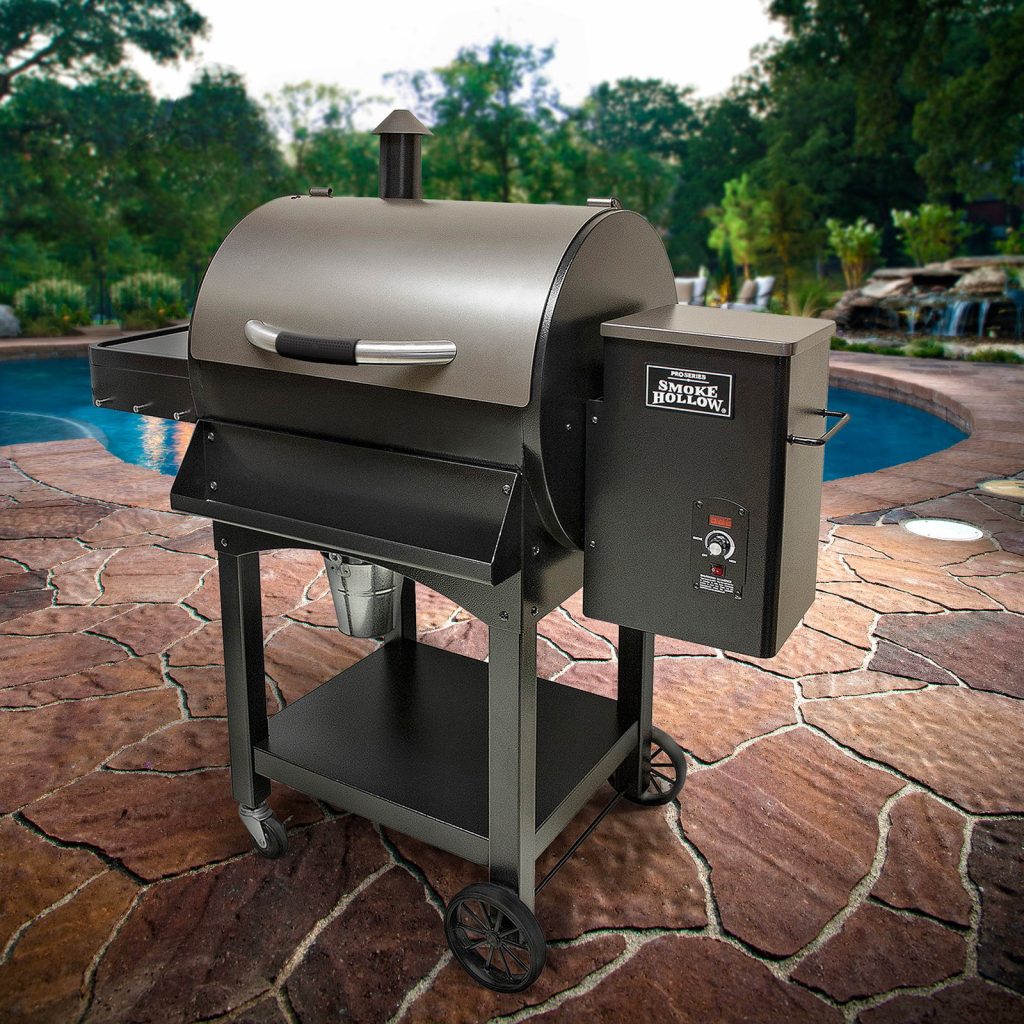
Kamado
Kamado grills are round, ceramic units fueled by charcoal. They function like wood-fired ovens and feature thick, insulted sides that absorb a significant amount of heat to cook your food evenly. You can use a Kamado grill for standard meals, like steaks and burgers, or you can turn it into an outdoor oven or smoker.
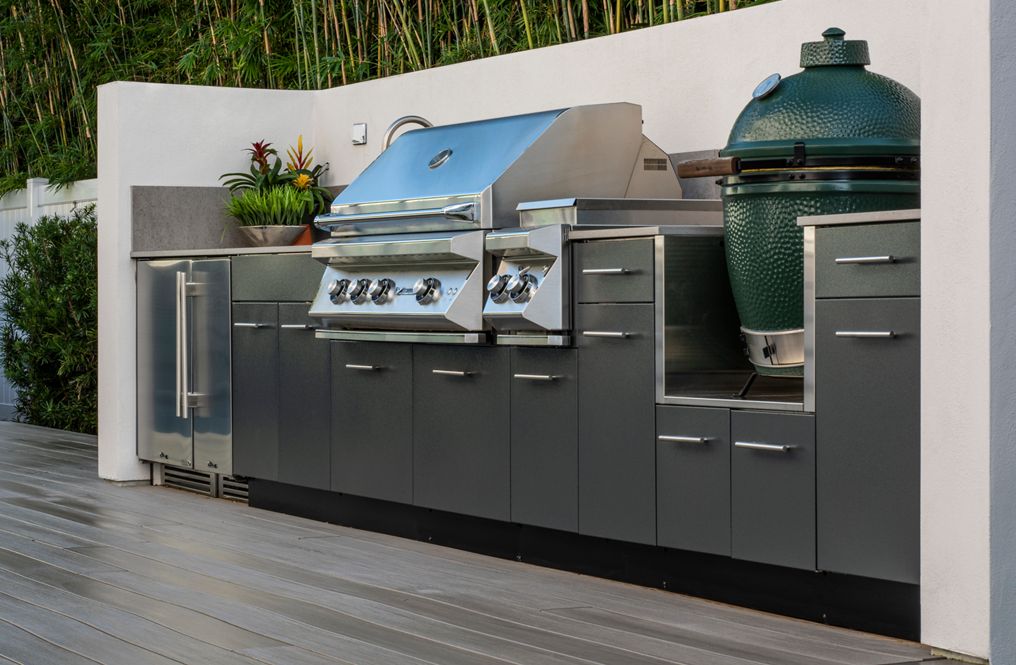
Electric
If you’re looking for an eco-friendly, healthy alternative to a traditional gas grill, or if you live in a place that doesn’t permit the use of gas or charcoal grills, then an electric grill is your best option. Electric grills require little to no preheating, use less energy, and emit fewer carcinogens than other grill types. They also burn cleanly and don’t produce open flames or smoke, which eliminates the risk of a fire.
Hybrid
We understand the dilemma of deciding between charcoal and gas. On one hand, gas grills are the most user-friendly, but on the other, charcoal grills create so much flavor. Hybrid grills offer the best of both worlds with versatile designs that accommodate gas, charcoal, pellet, wood, and Propane fuels. Some hybrid grills have separate fireboxes, which can be used at the same time, while other models make it incredibly easy to swap out one fuel for another whenever you’d like.
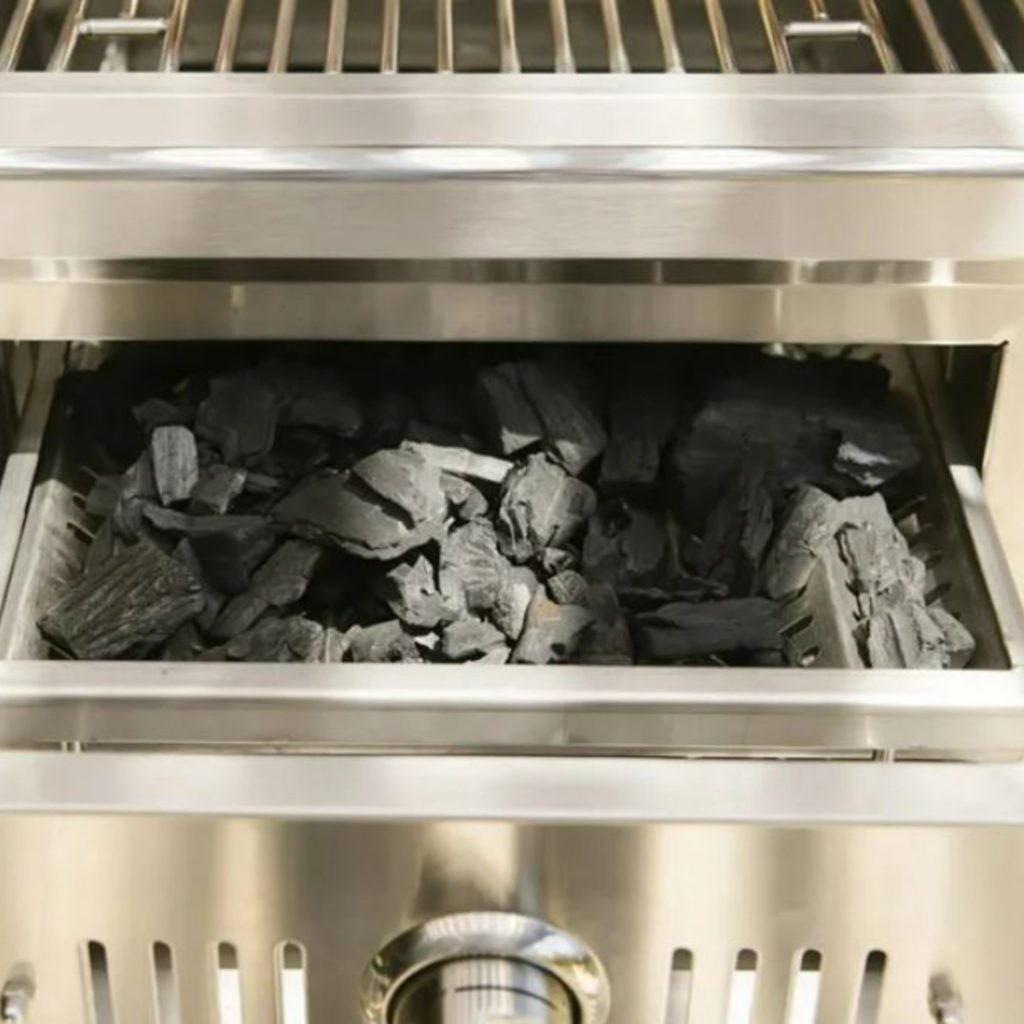
CHOOSE YOUR CONFIGURATION
After you determine which fuel you’re going to use, you’ll need to choose a grill configuration. You have the option between a Built-in or Freestanding model.
Charcoal, pellet, gas, and electric grills come in both built-in and freestanding configurations, while Kamado grills are only available as freestanding units.
Built-In Grills
If you’re building a custom outdoor kitchen, then a built-in grill is the best option.
Also known as grill heads, built-in gas grills are permanently installed into a kitchen island or counter.
Plus, built-in grills are often available with a full line of matching outdoor equipment and components to offer a uniform look for your space.
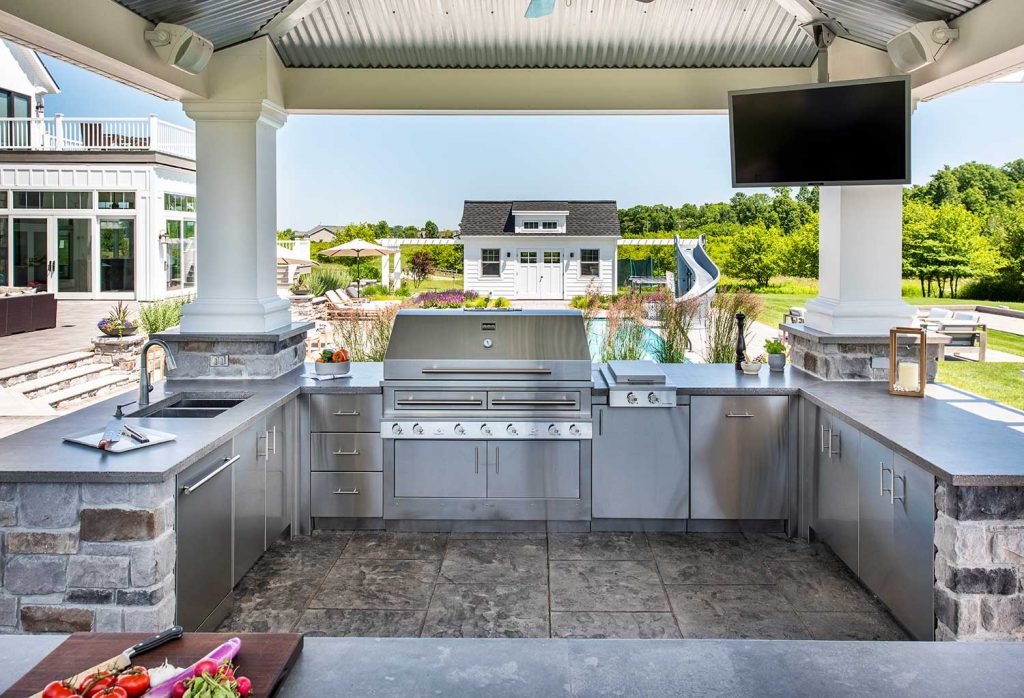
Freestanding/Cart-Mount Grills
If you don’t have an outdoor kitchen or you’re looking for a more portable option for your cooking setup, then a freestanding grill is ideal.
These grills are placed on a mobile cart that has an enclosed storage area for your Propane tank and cooking accessories, so they aren’t visible but are still easily accessible.

GET THE RIGHT GRILL SIZE
The size of your grill and the number of burners it includes determine how much food you’ll be able to prepare at once and which cooking techniques you can use.
Grills are available in a wide range of sizes, from small, two-burner models to extra-large units with several burners and ample storage space.
While it’s tempting to opt for the fancy Goliaths of the grill market, if you buy a model that’s too large, you’ll end up spending more on fuel than necessary.
When choosing your grill size, ask yourself the following questions:
- How often do I grill?
- How many people do I regularly cook for?
- What is the maximum number of people I anticipate cooking for?
- Do I like to prepare simple meals or spreads with elaborate side dishes?
Small Grills
Small grills are typically equipped with two burners and have a cooking surface of 400-500-square-inches or less.
If you’re a casual griller who occasionally cooks for fewer than four people, a small grill is the best choice.
The Patio Post-Mount Gas Grill by American Outdoor Grill features a 432-inch cooking surface and two burners. An infrared back burner and rotisserie kit let you cook a variety of mouth-watering meals, while an easy-to-use drip collection system guarantees an easy clean-up.
Medium Grills
Medium size grills range from 500-600 square inches and come with two to four burners.
More burners provide an opportunity to experiment with different cooking methods and prepare side dishes as you grill up the main course, because you’ll have more than one heating zone.
The Sterling Patio FR Pedestal Infrared Gas Grill by TEC has a 592-square-inch cooking surface and uses infrared technology to guarantee even heat distribution and high temperatures for searing. Side shelves and extra storage space under the grill help keep your cooking space organized.
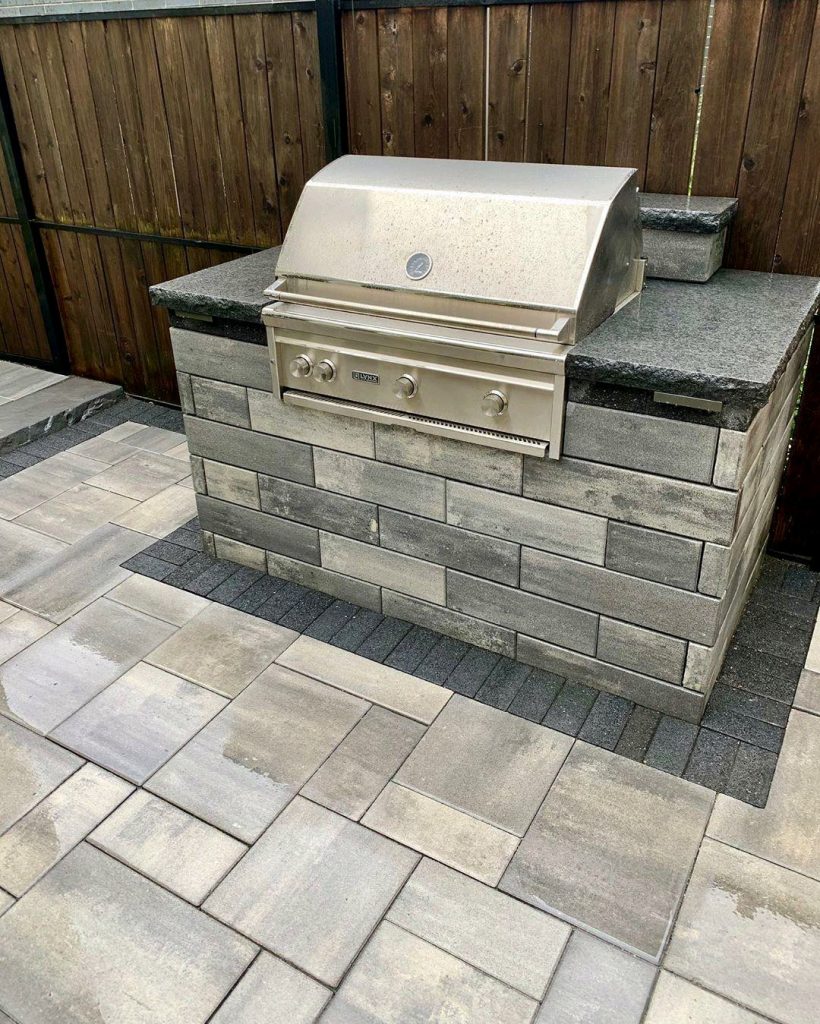
Large & Extra-Large Grills
Homeowners who love grilling and regularly host friends and family should look for large grills with a 600-700-square-inch cooking surface and four or more burners.
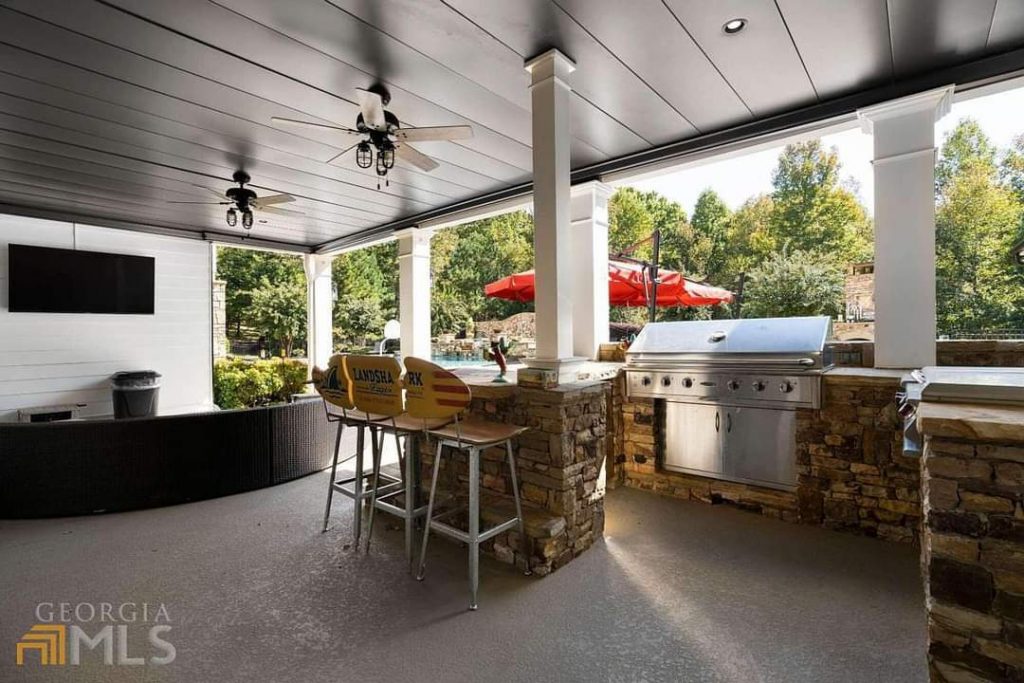
Summerset’s 32” Sizzler Built-In Gas Grill is equipped with four burners and has a generous 795-square-inch grilling surface. It also includes a stainless steel U-tube burner to ensure there are no cold spots on your grill.
You can customize the Sizzler with a few optional accessories, including a rotisserie kit, a liner to keep more heat inside your grill, a built-in grill cover, and a sear burner for Michelin-Star steaks.
There are even extra-large grills with up to eight burners and cooking surfaces that range from 800 to 1,000 square inches.
Extra-large models are geared toward experienced grill enthusiasts and usually include luxurious upgrades, such as side burners for simmering, high-temperature infrared burners for searing, rotisserie systems, built-in smokers, LED lighting, storage space, and more.
For example, the Lynx 54” Built-In Gas BBQ Grill features a whopping 1,555-square-inch grilling surface, three ceramic burners for maximum heat retention, and one infrared burner for searing at high temperatures. It also includes a built-in temperature gauge, a rotisserie system, internal halogen grill surface lights, and an insulated hood that keeps your grill cool to the touch.
